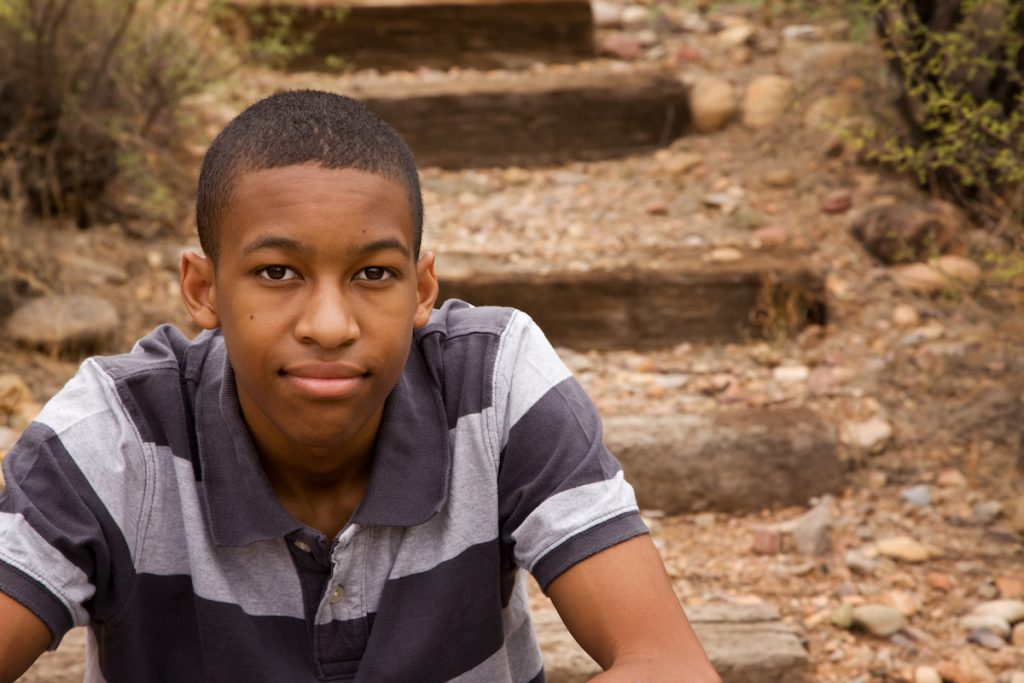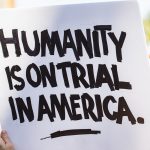Two cases that exemplify racial tensions in America are catching our nation’s attention.
In one case, Brennan Walker, a black teen, was shot at by retired firefighter Jeffrey Zeigler after knocking on the door of Zeigler’s Rochester Hills, Michigan home. Brennan was in search of directions to his campus after missing the school bus and getting lost on a shortcut to his school.
In the second case, Rashon Nelson and Donte Robinson were arrested in a Philadelphia Starbucks after a manager accused them of loitering and called the police, claiming the men were trespassers. The men had refused to leave when asked because they were waiting to meet with real estate developer Andrew Yaffe about a business opportunity. Yaffe arrived as the men were led out in handcuffs for trespassing, and vociferously assured the police that the men were waiting for him and therefore not trespassing.
Understanding what is at stake in both of these incidents—and in our own responses to them—is the intention of this essay.
Start your day with Public Discourse
Sign up and get our daily essays sent straight to your inbox.The Walker Case
In Walker’s case, the moment was caught on Zeigler’s home security video, disproving Zeigler’s claim that he shot in self-defense. This evidence led to his arraignment for assault with intent to murder. Allegedly, Zeigler’s wife can also be heard on the tape asking “Why did these people choose my house?” According to prosecutor Kelly Collins, the video affirms Walker’s account of events, not Ziegler’s. The scene described by Walker is one of hysteria, with Mrs. Zeigler opening the door, yelling and accusing Walker of trying to rob her, and Zeigler responding to his wife’s screams by running down the stairs with a 12-gauge shotgun and shooting at the fleeing Walker.
Several things stand out here. First, Zeigler is a retired public servant who pleaded guilty to shooting at someone during a road rage incident in 2004. However, in online and personal discussions of this case, I have not seen anyone ask whether or not Zeigler has a criminal record. Instead, I have seen or heard multiple people ask whether Walker, the teen who was shot at, has a criminal record. The presumption of criminality lay not with the man whose own surveillance tape accuses him, but with the black boy who was shot at.
Second, the Zeiglers’ recorded response offers a frightening insight into current race relations in America. The Zeiglers saw the appearance of a black boy at their door as a kind of invasion. The mere sight of him led to a quick escalation: an inference that he was there to rob them, cries for help, and a quick resort to potentially lethal self-defense. The immediate fear of someone different from them is captured in Mrs. Zeigler’s expression: “Why did these people choose my home?” Walker was not at the Zeiglers’ door at the head of a mob; he was alone. By “these people,” Zeigler means “black people.” The teenage Walker becomes a symbol to the Zeiglers of all the assumptions they hold about black citizens and their intentions.
The Zeiglers’ unhappy and limited understanding of “these people” is not a merely a lack of political correctness. It is a matter of life and death.
The Starbucks Incident
Similar themes of swift escalation and prudence forgotten in the face of blackness are present in the Philadelphia Starbucks incident. However, some people mistakenly dismiss the incident as a non-substantial kind of dignity harm, while others view the outcry against the arrest of the two men as a kind of intolerant demand for toleration that exceeds the bounds of justice and moderation.
Other people may focus more on the fairness of the Starbucks policy itself, not on the application of the policy, or even the fact that the men were not loitering, but participating in the common consumer habit of meeting friends and business associates in public places and waiting to make a purchase. The implication of such scrutiny is that the men were expecting special treatment, the kind of treatment not afforded to citizens in a republic of equals.
On the contrary, the problem is not that Nelson and Robinson were expecting special treatment, but that they were not afforded the equal treatment that all citizens should receive in a republic. The sentiment of many of those present was that the men were singled out. Melissa DePino, who posted the vital footage of the incident to Twitter, remarked in her tweet that “All the other white ppl are wondering why it’s never happened to us when we do the same thing.” Furthermore, Starbucks “acknowledged that the incident is at odds with a common practice,” noting the reputation of Starbucks as “community hubs” and throwing into question the status of the policy itself. Philadelphia’s police chief has since apologized, saying his actions ““exacerbated” the situation.
What is it like to live in America for Brennan Walker, or for the two Philadelphian men? This is the question I turn to next.
Republican Freedom and the Resistance to Equality
It is worth quoting Tocqueville, no advocate of any tyrannical democratic impulse, at length here.
There is a natural prejudice that leads man to scorn the one who has been his inferior, long after he has become his equal; real inequality produced by fortune or law is always followed by an imaginary inequality that has its roots in mores; but among the ancients this secondary effect of slavery came to an end. The emancipated man so strongly resembled the men who were born free that it soon became impossible to distinguish him from them. What was more difficult among the ancients was to change the law; what is more difficult among modern peoples is to change mores, and for us the real difficulty begins where in antiquity it ended. This happens because among modern peoples the non-material and transitory fact of slavery is combined in the most fatal way with the material and permanent fact of the difference of race. The memory of slavery dishonors the race, and race perpetuates the memory of slavery.
Tocqueville notes something that American conservatives often deny. The reach of human memory is a long one, and particularly so in the case of race, which combines the remembrance of subordination with a physical marker.
Tocqueville suggests that intermarriage, and its psychological effects, might help us to escape this cycle. In the children born of such marriages, the white parent would see his or her features reflected back and would thus be more inclined to view African Americans as equals rather than inferiors, gradually erasing any remembrance of legalized inequality. In other words, the natural love of one’s own would teach the white American to love his black family members and then neighbors and fellow citizens. This dynamic is captured in Tocqueville’s account in Democracy in America of the sufferings of the white slave owner whose black sons would be sent downriver after death because he had failed to manumit them. Though the master learned justice too late, it was love of his own that enabled him to learn justice at all. This seems to be an extension of Tocqueville’s understanding of self-interest well understood. Perhaps he thought no other motive would work successfully on Americans when it came to race, because they had not yet learned to think of the three races present in America from its inception as being worthy of being included in “the love of one’s own.”
Continued Racial Discord
Instead of racial reconciliation or integration, however, contemporary America faces continued racial discord that throws into question our mutual seriousness about the natural rights tradition and our commitment to the demands of republican citizenship. Though it is the fashion in many circles to think that the problem of race ended with the success of the civil rights movement, recent scholarship and commentary show this is not the case.
In the recently published Mothers of Massive Resistance, Elizabeth Gillespie McRae convincingly proves “that racial segregation seeped into the nooks and crannies of public life and private matters, of congressional campaigns and PTA meetings, and of textbook debates and day care decisions” from the early twentieth century until the 1970s, and implies that this seepage has not yet been stopped. Similarly, Ta-Nehisi Coates persuasively traces a history of the consequences of institutionalized racism after the passage of the seminal Civil Rights Act, particularly with regard to housing discrimination and predatory loan practices. He notes what he calls America’s “compounding moral debt”: “Two hundred fifty years of slavery. Ninety years of Jim Crow. Sixty years of separate but equal.” Decades of exploitative and discriminatory housing and banking practices have followed.
These problems exist alongside the many famous instances of police brutality against blacks, from Michael Brown, who was shot by policeman Darren Wilson in a city where the police sent emails to each other comparing blacks to monkeys and dogs, to Philando Castile, who died when he reached to show a police officer his permit to carry a gun. Police officers are three times more likely to subject black Americans to the use of force than they are white Americans, and unarmed black Americans are three times more likely to be shot by police than unarmed white citizens. When it comes to searches and seizures, black Americans are a third more likely to be stopped by police than white Americans, and their chances to be searched at the stop are also three times higher than is the case for white Americans, even though white Americans are found carrying illegal items or substances at a 50 percent higher frequency during pedestrian stops. A similar trend is found in drug arrests: though black drug use is the same or only incrementally higher than white drug use, black Americans are five times more likely to be placed under arrest for possession. All of this occurs against the backdrop of the following statistic from the Bureau of Justice: “1 percent of blacks overall (about 2 percent of black men) commit a violent crime in any given year.”
Undue discrepancies of treatment extend into the realm of medicine, as well, with infant mortality rates and maternal mortality rates among black women and children dwarfing those of white Americans. They even exceed rates in Mexico, where half of the female population lives at or below the poverty level. Similar trends are found in the area of education as well.
It is unacceptable that citizens experience the application and consequences of the law differently when we are supposed to be equal before the law. And it destroys civil society when those committed to public service, such as doctors, teachers, and police officers perpetuate this unequal treatment. Yet, on the right, these important and real issues too often get lost amid accusations of special pleading and frustrations with identity politics. It is to this dynamic that I now turn.
The Conservative Response to Institutional Racism: Protesting Too Much
There is clearly much reason to believe that the experience of liberty in America is different for white Americans than it is for black Americans, whether we are talking about liberty before the law or in the realm of civil society. Yet the conservative response to this phenomenon has thus far been insufficient, and is often almost totally reactive and defensive.
Complaints about identity politics often miss the mark in our current political situation and are often a way of intentionally or accidentally dismissing a true political problem: the problem of institutionalized racism. Though warnings about the dangers of tribal politics are important, I suggest it is disingenuous to claim, as some have, that the increase in white identity politics is a response to an unreasonable agitation and demand for more equality on the part of blacks. This kind of response fails to recognize the very real and often determinative inequalities that black Americans experience, and the validity of their demands for change as a righteous and republican self-assertion.
While implicit bias, the cause of much of this inequality, is a difficult problem to confront, conservatives seem rarely to acknowledge its existence and its consequences, much less offer suggestions about how to counter it. Sometimes, as a conservative, it feels like we fixate on a mosquito that’s buzzing in our ear while fellow citizens are being stung by hordes of bees. When our first response to cases like Walker’s or the Philadelphia Starbucks customers’ is to complain about the oppressiveness of political correctness, to immediately scrutinize the motives of the black persons involved while leaving the motives of involved others untouched, or to balk about special treatment, something is wrong.
Think here of the common conservative response to accusations of police brutality: the impotent and tepid invocation of the occurrence of “black on black” crime, in spite of the fact that white people are statistically more likely to commit crimes against other white people, because humans tend to be violent toward those with whom we live in closest proximity. Or consider the constant debates on the right about Collin Kaepernick’s protest against the American flag, when compared to the dearth of any serious attempt at understanding the reality of what Kaepernick is protesting. A similar problem appears in the right’s response to the Hamilton cast’s peaceful speech to Vice President Mike Pence. On the whole, we bemoaned a loss of civility and discourse without treating the problematic relationship that the Trump campaign, and the Trump administration, have with race with any comparable attentiveness.
These kinds of examples suggest the weakness of American conservatism in the face of institutionalized racism and represent a major source of tension between conservatives and members of ethnic and racial communities. Understandably, they often take this kind of misdirection and attention to tangential issues as a kind of cluelessness, or worse, malice. It is read as a hesitation to condemn injustice and a willingness to maintain the status quo, a status quo Tocqueville suggests is deeply touched by the county’s original sin of racism in a way that benefits American whites at the expense of American blacks.
In an effort at self-scrutiny, we should ask ourselves what our first response is in the face of evidence of institutional racism, and then ask ourselves what it should be. What would we want the response to this treatment to be if we were the ones who were being arrested for waiting for a friend in Starbucks, or it was our children being shot at for knocking on a door and asking for help when they are in need? Perhaps if we spent as much time decrying what happened in the Philadelphia Starbucks or at the Zeiglers’ house as we spend critiquing responses to such events, the problem of race in America would not be so aggravated in the first place.













